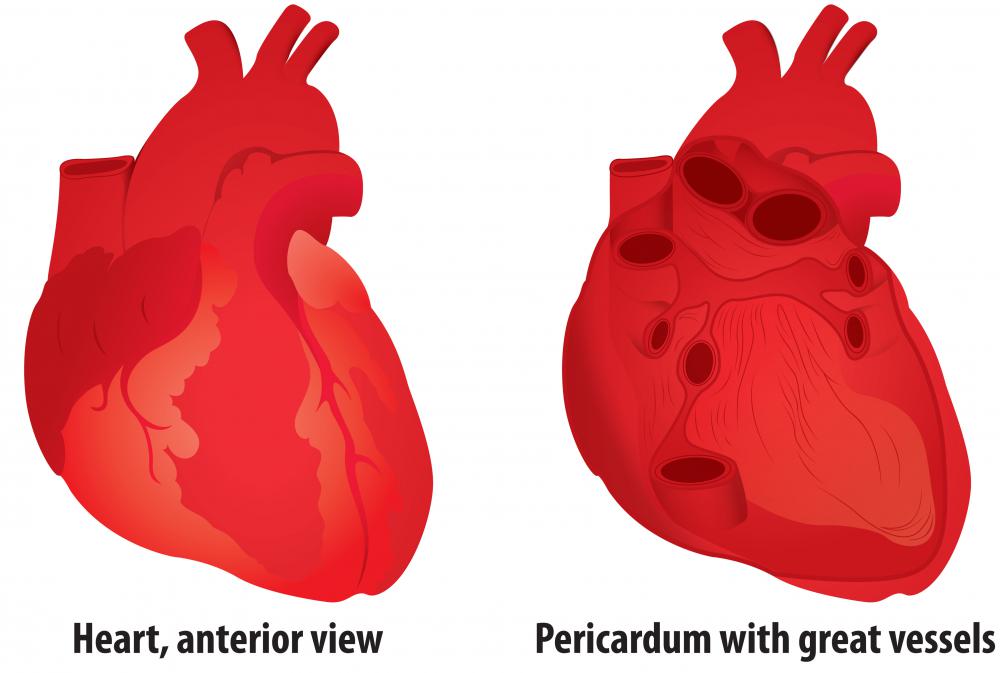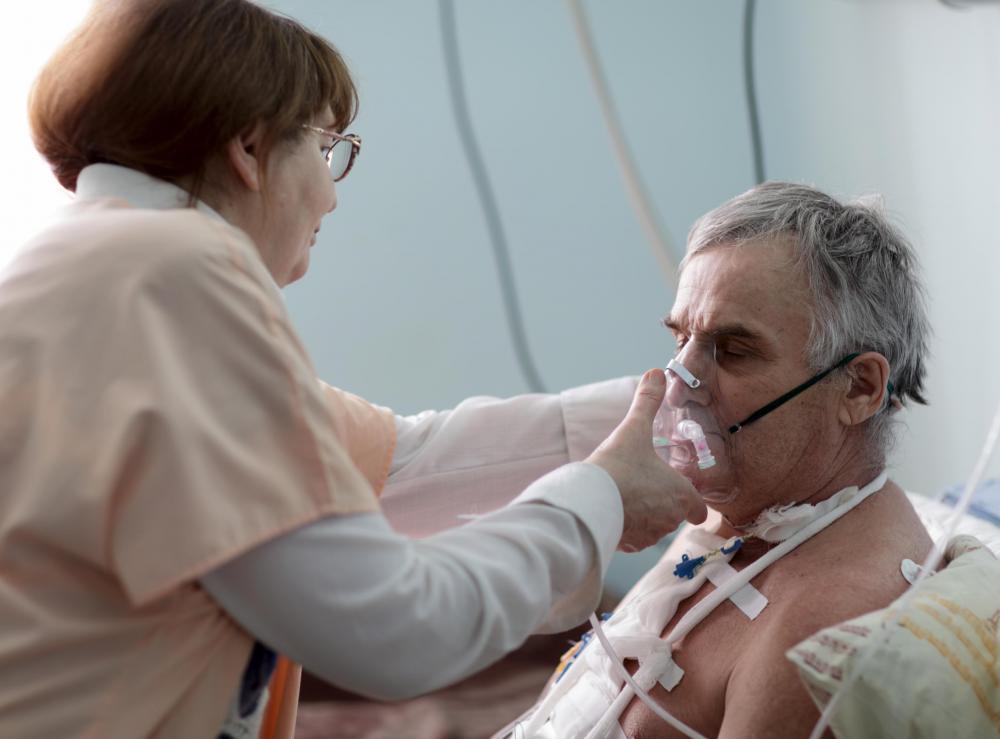At TheHealthBoard, we're committed to delivering accurate, trustworthy information. Our expert-authored content is rigorously fact-checked and sourced from credible authorities. Discover how we uphold the highest standards in providing you with reliable knowledge.
What Is Pulmonary Wedge Pressure?
Pulmonary wedge pressure (PWP) is both a diagnostic and therapeutic medical tool for taking measurements, using a wedged balloon in a pulmonary catheter and inflated within a pulmonary artery. Upon inflation, the balloon can measure left ventricular end diastolic pressure. The tool can measure distinctive differences between artery and venous pressures, which can possibly be due to arterial venous malformations (AVMs). PWP can be used during surgical procedures and for management of many serious and critical diseases.
Some of the diagnostic uses of pulmonary wedge pressure catheterization are for shock states, valvular disease, pulmonary embolisms, and cardiac tamponade, which is a collection of blood in the pericardium causing compression. It may also be used for diagnoses of severe burns, multi-organ system failures, and idiopathic pulmonary hypertension. Pulmonary edemas that are above certain levels are a life-threatening condition, and through periodic capillary wedge pressure measurements, a doctor can efficaciously tailor use of diuretics. Additionally, the breathing patterns of heart failure patients can be carefully monitored to determine if habitual shallow breathing is exacerbating their conditions, requiring additional treatments to forestall heart failure recurrence.

Pressures are measured by inserting the balloon-tipped catheter into peripheral veins and through these veins entering into the right atrium of the heart and from there into pulmonary arteries. Measurements of systolic and diastolic pressures there give right atrial pressure readings and as the balloon deflates once more, left atrial pressures are estimated. The catheter, also known as a Swan-ganz catheter, is often guided by a fluoroscope.

Pulmonary wedge pressure measures lung water changes, which can signal pulmonary venoconstrictions in patients with acute respiratory distress syndrome (ARDS) and hypoxemia. The uses of pulmonary wedge pressure readings of patients undergoing procedures inform doctors in calculations of cardiac output, which points to how much function may be affected by the procedures. The cardiac function and hemodynamic readings of anesthetized patients can instruct an anesthesiologist monitoring patient states when to signal that therapeutic interventions are necessary.

In assessing shock states, pulmonary wedge pressure readings can be taken to determine if tachycardia or hypotension are present, if there are inadequate ventricular fillings, or if a severe depression in cardiac performance has put a patient into a state of cardiogenic shock. In cases of mitral valve leaks, often caused by congenital heart conditions or rheumatic fever damages to the mitral valve, the PWP can observe waveforms that signal ruptured papillary muscles. In cases of septic shock, which is the most common form of intensive care unit (ICU) deaths in the United States, a PWP reading can detect the low filling pressures that inform of profound peripheral vasodilations that rob organs of blood.

The risks and possible complications from using a pulmonary catheter show that the most common and a serious complication is a pulmonary artery rupture. Of course, operator skill and the status of patients have a bearing on any complications that might arise. A common complication upon insertion of the pulmonary catheter is heart arrhythmias.
AS FEATURED ON:
AS FEATURED ON:















Discuss this Article
Post your comments